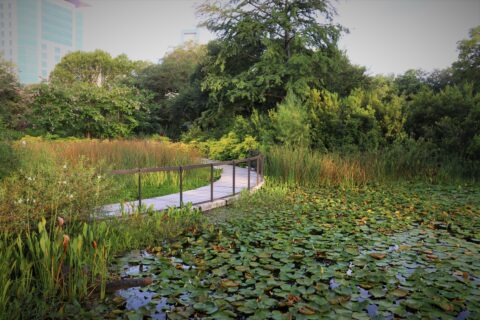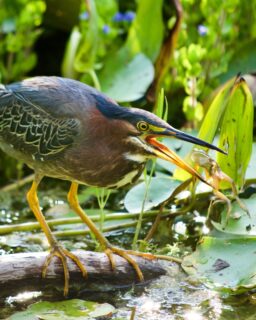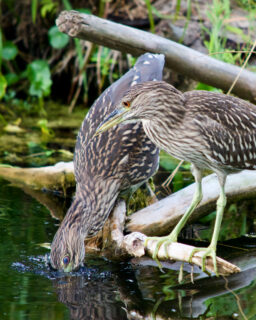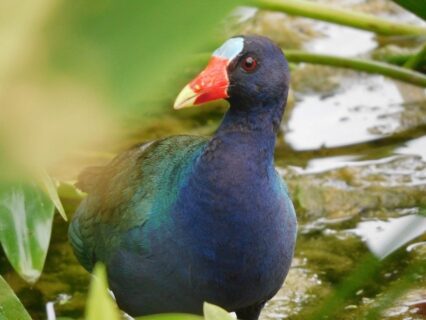Houston Zoo Celebrates World Wetlands Day

When it comes to biodiversity, you would be hard-pressed to find an ecosystem with more complexity than a wetland. From saltwater and freshwater marshes to peat bogs, prairie potholes and vernal pools, each type of wetland habitat is simply bustling with an abundance of plant and animal life! The species assemblage associated with each habitat type or location can vary greatly, with some organisms being rare and perhaps found nowhere else (endemic fish and plants), and others that just drop by seasonally (such as migrating birds making a pit stop to rest and refuel, or toads wanting to lay eggs). To the keen observer, a wetland environment is a treasure trove of natural interactions between plants, microbes, algae, fish, mammals, reptiles, invertebrates, and birds, both above and below the surface of the water.
Our Kathrine G. McGovern Texas Wetlands exhibit turns four this May. The main part of the exhibit was created to be a self-sustaining ecosystem (meaning we let nature take its course), and we have been delighted to watch the changes with each season and through each year as the habitat matures. Since opening in 2019, the wetland habitat has been a big hit with local wildlife—we have recorded over 150 animal species! Plants and algae are utilized year-round for food and shelter by fish, protozoans, aquatic insects, frogs, and turtles, so no matter what the season, both types of greenery are very important! Check out our field guide!
All the usual suspects have graced us with their presence; dragonflies are abundant, as are wading birds like egrets, herons, and ducks, and of course frogs are a staple… but the last two seasons, we have seen an incredible abundance of bullfrogs. Although we did not add them, bullfrogs are an important part of the ecosystem—they are predators of insects, small turtles, small mammals, and even other frogs. On the flip side, they are also a welcome food source for many birds and larger fish.

Speaking of birds, we have also been lucky enough to have migratory species stop and enjoy our wetlands each year. Yellow-rumped warblers, ruby-crowned kinglets and white-throated sparrows appear in the winter, and Carolina wrens and common yellowthroats in the spring. And of course, plenty of native birds bring their new families over in the spring and summer to hunt for insects; some even learn how to fish!

But possibly the most unexpected sighting so far was a purple gallinule, pictured below. This bird arrived at the Zoo’s wetland habitat in June of 2022 and was all the rage amongst Zoo staff! Where else might you see such a typically secretive bird hunting, bathing, preening, and generally doing its thing a mere few feet away? We were graced by “our” gallinule’s presence for a couple of months (all spent feasting on small bullfrogs) before he or she moved on. This occurrence mirrors the importance of wetlands to transient/migrating birds in the wild—they provide a place to stop, rest, and recharge.

Wetlands are one of the most productive and important habitats on the planet—they are nurseries for many species, provide food and shelter for countless others, mitigate flooding, and purify stormwater runoff. Unfortunately, 90% of wetlands around the world have suffered degradation of some kind or have disappeared altogether—humans are responsible for most of these changes. As we celebrate World Wetlands Day, this year’s theme is wetland restoration as the animals and plants that depend on wetlands are counting on us to help. Here are a few ways you can get help make a difference:
- Go visit a local wetland habitat
- Volunteer with a wetland restoration group
- Work with your community to turn a retention pond into a wetland habitat
- Make a wetland habitat of your own
Wetland areas are crucial for wildlife, but also a place for us to reconnect with nature and ponder how we fit into the scheme of things, and—perhaps most importantly—how we can protect, restore, and nurture the health of the planet. Stop by our Texas Wetlands exhibit the next time you visit the Zoo.
